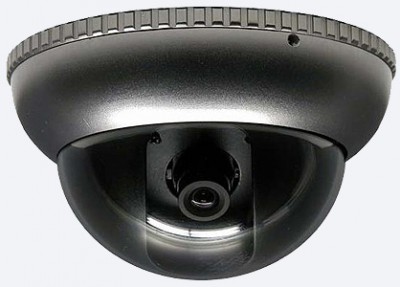Bloggers and a myriad of other independent media sources are abuzz with news of Wikileaks latest revelation, but you probably won’t hear much about it in the main stream media, at least for now. The topic of discussion is a facial recognition and surveillance system being used across the country by the name of Trapwire.
David Seaman of Business Insider reports that, “Trapwire would make something like disclosure of UFO contact or imminent failure of a major U.S. bank fairly boring news by comparison.” And perhaps this system would not appear so ominous were it not for the Obama administration’s determination to use the National Defense Authorization Act against American citizens without the benefit of due process.
Trapwire was developed by Abraxas, a Northern Virginia company staffed with elite from America’s intelligence community. Former senior intelligence officials who run Abraxas have developed a super-sophisticated surveillance system that makes most modern facial recognition technology seem antiquated. And according to messages hacked from over 5 million emails by Anonymous, the capabilities and scope of Trapwire have largely gone unnoticed by America at large.
Every few seconds, data picked up at surveillance points in major cities and landmarks across the United States are recorded digitally, encrypted, and immediately delivered to Abraxas’ fortified central database center at an unidentified location for use by a variety of government and private intelligence concerns.
Employees of Arbaxas make up a veritable who’s who of former agents from the Pentagon, U.S. intelligence agencies, and other government entities. Beyond that, details on Abraxas and Trapwire have been scarce. But with last year’s hack of the Strategic Forecasting intelligence agency (Stratfor) a clearer picture of Trapwire’s capabilities is quickly coming into focus.
Stratfor partnered with TrapWire in August of 2009 to promote each other’s products and services. Stratfor provides the analyses and reports tied to terrorism surveillance and pre-operational activities to TrapWire, while TrapWire has been offering Stratfor introductions to senior security officials.
Through existing CCTV cameras that you’ll find at just about every intersection or a major corporation today, Trapwire’s “TrapWire Critical Infrastructure” can integrate a facial and pattern recognition monitoring rules-based algorithm to collect data over time. The data can be “matched” by TrapWire between the organizations that have installed TrapWire, to identify pre-attack activities hinting at terrorism or criminal activities in different locations. New York City subways, for example, have been equipped with 500 cameras using TrapWire.
As the emails and TrapWire’s website has indicated, the technology is already prevalent in the United States government, many multinational corporations, and overseas government entities including UK’s MI5 and possibly Nigeria. It’s used by the Department of Homeland Security, local law enforcement agencies, the FBI, CIA, U.S. Secret Service, and likely just about every other government security agencies that exist today. In fact, according to an email sent in February 2011 by Stratfor’s CEO, Fred Burton, “TrapWire is in place at every [High Value Target] in NYC, DC, Vegas, London, Ottawa and LA.”
The hacked emails indicate TrapWire was instrumental in uncovering an al Qaeda terrorist plot in September of 2010 when the system connected the dots between suspicious individuals who were surveying a financial institution, an entertainment center, and a government building in Los Angeles.
Many however distrust how such an invasive and universal system might erode personal freedom. That concern is heightened by the Obama administration’s decision to fight in federal court for the ability to imprison American citizens under NDAA’s indefinite detention provisions without charge or trial, on suspicion alone.
Digital Trends notes that “CCTV cameras [are] just about everywhere, [and] there’s a very real probability that TrapWire could be the sole intelligence system watching our streets.” But then the computer news web site makes light of the sinister side of Trapwire by adding, “The thought of a computer monitoring your every movement may put you at unease. Unless you’re a drug lord or a terrorist, you should probably be more worried about losing your job, or inevitable data plan hikes by Verizon and AT&T. At this point, there’s no evidence that TrapWire has been employed anywhere for non-security purposes.”
Trapwire may indeed be preventing potential terrorist attacks, but at what price? How far can we stretch the “if you aren’t guilty of anything you shouldn’t care” argument? Trapwire may prove to be the development that takes it one step too far.
©2012 Off the Grid News
 Off The Grid News Better Ideas For Off The Grid Living
Off The Grid News Better Ideas For Off The Grid Living




